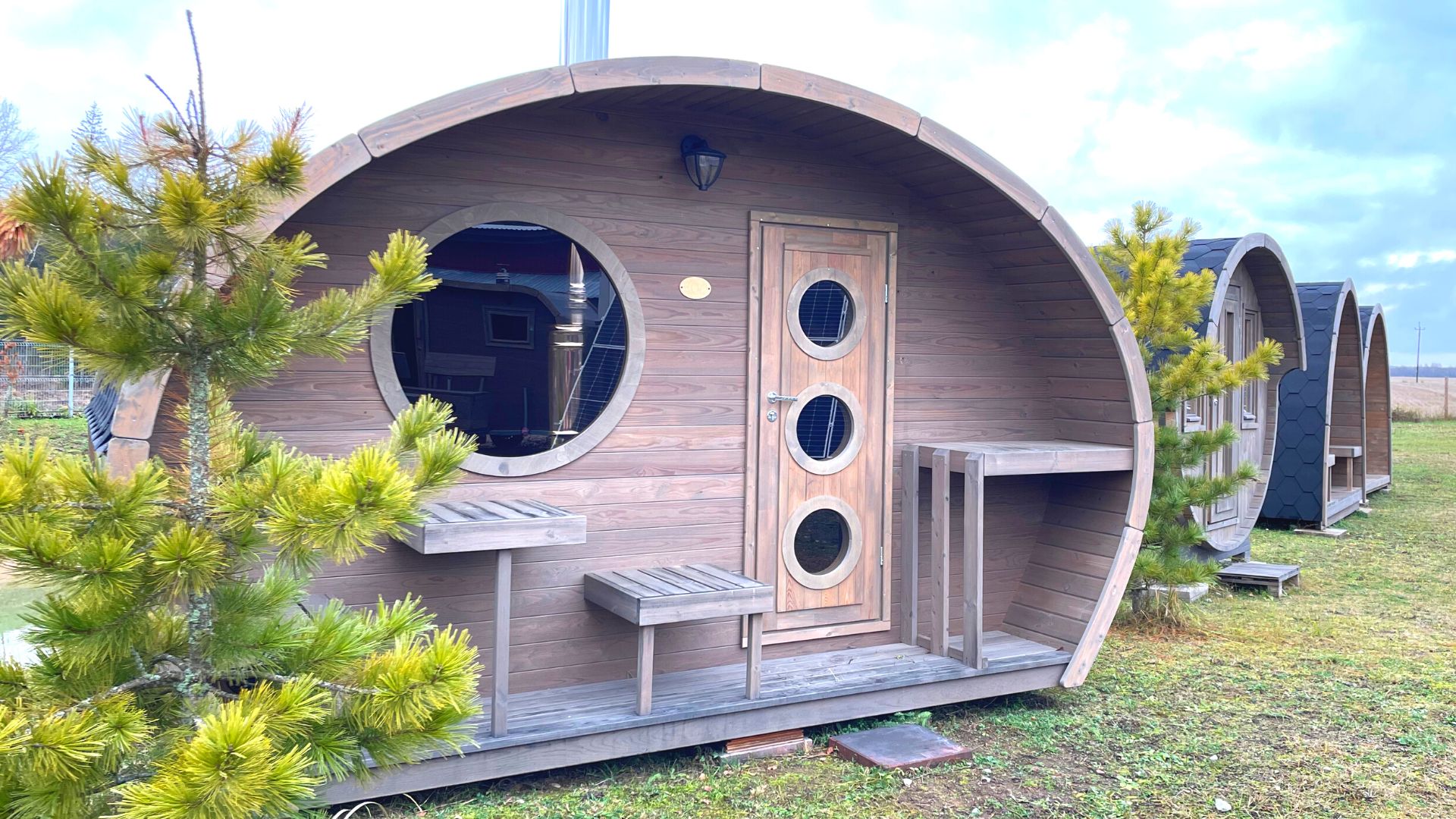While there’s increasing evidence of the health benefits of sauna bathing, the question of how it affects hair growth remains a source of confusion for many.
We all know that heat damage is one of the main reasons our hair gets split ends, and looks frizzy and dry. But does that mean that really sauna bathing is bad for your hair? Let’s dive into the available research and see what we can learn about heat, sauna bathing, and hair health.
The science on hair: it’s growth and heat damage
Hair is technically dead. We see many products on the market claiming to ‘restore’ hair and make it ‘healthy’ etc., but in reality, the shaft (or in other words, the part of the hair we see) is made up of keratinized cells that are no longer alive, just like our nails. Whilst that may be the case, we still don’t want to walk around with frizzy, unmanageable hair, which is why it’s important to prevent as much damage as possible.
 So if hair is dead, what makes some hair so frizzy and some appear ‘healthy’? Well, the structure of the hair is made up of different layers. The outer layer (cuticle) has overlapping layers like roof shingles or fish scales. This outer layer plays a large part in why your hair looks and behaves the way it does. If those cuticle layers, or shingles are very open, the inner part of your hair is exposed and vulnerable to breakage and can give a frizzy, dry, and dull appearance. When the cuticles are closed or smooth, your hair is better protected and looks visibly smoother and healthier.
So if hair is dead, what makes some hair so frizzy and some appear ‘healthy’? Well, the structure of the hair is made up of different layers. The outer layer (cuticle) has overlapping layers like roof shingles or fish scales. This outer layer plays a large part in why your hair looks and behaves the way it does. If those cuticle layers, or shingles are very open, the inner part of your hair is exposed and vulnerable to breakage and can give a frizzy, dry, and dull appearance. When the cuticles are closed or smooth, your hair is better protected and looks visibly smoother and healthier.
With that in mind, one of the most common culprits of hair damage is heat. The high temperatures that are used to straighten, curl, blow dry hair, or to take a sauna, can cause the cuticles to open and become damaged. Whilst your cuticle layers are open, it’s much more likely you’ll also cause damage to the cortex (inner) structure of your hair too.
What are the effects of sauna on hair?
Although you might initially assume that taking a sauna could be harmful for your hair; there are many other factors to consider before drawing a conclusion.
It’s true that taking a sauna (especially if you like it very hot!) can dry out your hair and open up the hair’s cuticles. However, there are many ways you can use this to your advantage, and actually improve your hairs texture, or promote hair growth.
We know, for instance, that saunas improve circulation, and an increased blood supply to your scalp stimulates hair growth.
We also know that whilst open hair cuticles make the internal structure more vulnerable, it also means that it’s easier for your strands to absorb moisture and conditioners/treatments.

How to protect hair in sauna
In addition to the many health benefits of incorporating saunas into your wellness routine, you can also improve the condition of your hair by following these helpful tips during your sauna session.
1. Wear a sauna hat to reduce the heat exposure to your hair
Wearing a sauna hat has many benefits, like providing a more consistent heat across your body (since heat rises). Traditional hats are made from wool, but these days cotton, linen and felt hats are also commonplace too. By keeping your hair in a good quality sauna hat, you can reduce its exposure to the high temperatures.
If you don’t have a hat available, a towel will do the trick too.
2. Use a treatment or conditioner during the sauna sessions
Whether you’re wearing a hat over your hair or not, you can leverage having your cuticles more ‘open’ by treating your hair to a conditioner during your sessions. This, again, provides an extra barrier to heat, but also prevents the hair from drying out
3. Wash your hair with cold water after your sauna
Once you’ve finished, wash your hair with cold water or use a cold plunge pool. You’ll need to wash your hair anyway, to remove any sweat or residues, but using cold water will help close the hair cuticles.
If you’re able to, allow your hair to air-dry.
4. Enter the sauna with clean hair
It’s a good practice to wash before entering a sauna anyway, but if you use styling products, be sure to wash those out before you enter a sauna. Many products won’t react well to the heat, and can intensify the heat and cause damage to the hair strands.
What’s the verdict on sauna effects on hair?
In conclusion, while heat is a common cause of hair damage, sauna bathing can offer potential benefits to hair health. By using protective measures such as wearing a sauna hat, using treatments or conditioners, washing hair with cold water, and entering the sauna with clean hair, sauna lovers can enjoy the huge list of health benefits of sauna bathing without compromising their hairs health.
Overall, saunas can be a valuable addition to an individual’s wellness routine, including their hair health.
FAQs on how to protect your hair during a sauna

Looking for your own home sauna?
Browse our beautiful collection of outdoor sauna buildings.
 +372 5552 6261
+372 5552 6261
